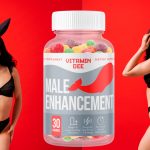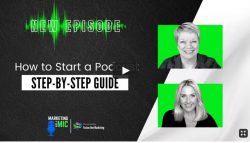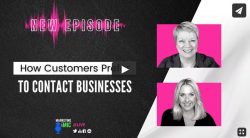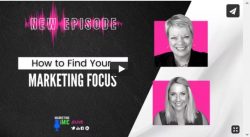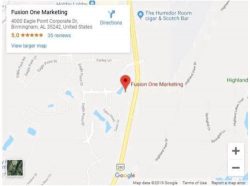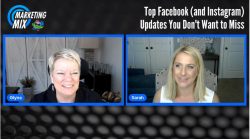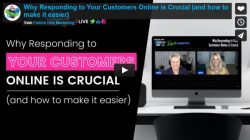Fusion one news summary from March 16th to March 31st
Hi everyone, we have back with new stuff and knowledge to share with you all. We come up every week to share new information that can help business owners to improve their online business and achieve new goals.
March 17, 2022
Google Ad trends that will put you on top
In this blog, we will talk about new Google Ad capabilities. There are some new trends to pay attention to.
Automation: AI helps to analyze how well your ads are performing across different platforms and then offer recommendations on optimizing your ad better. It also helps save time and identifies other issues with your ad. It also helps to automate your bidding and target your audience and predict through rates and conversions.
New Local Campaign formats: Local ad campaigns help local businesses to attract more potential customers. Google has not added three new ad formats to promote local businesses better. The new formats include auto-suggest ads, navigation ads, and similar places ads.
Google Shopping: Google has implemented updates to accommodate the increased eCommerce demands. Google has also integrated Shopify into its Google Ad platform. Their shopping graph will now begin to pull data (prices, videos, product information from across
First-Party data and Google ad: 3rd-party cookies, which drive a lot of online ads, will soon be obsolete. Google announced it would block them on Chrome in 2023. As part of the plan to evolve to “cookie-less browsing,” Google is moving into 1st party data. 1st party data is information a company collects directly from the customers it owns whereas 3rd party data is any data that you want to obtain but is not your own.
How to use 1st party data when creating your Google ad?
Google recommends creating segments. You can define your audience segments based on how users interact with your site and what content they view. Google will also automatically add some segments for you based on your audience sources. In doing this, you will add your data segments to ad groups and ad campaigns.
Focus more on quality vs. cost: The higher-performing ads are the ones that are generating customers and revenues, not just leads. To make this a success, marketers should be looking closely at how well their ad lines up with their ideal customers. A great way to do this is to train the algorithms within the platform to understand what type of conversion results in a new customer. One way to do this is to integrate your CRM with Google Ads. If that’s not an option, you can pass your data findings back and forth manually. Click on https://fusiononemarketing.com/google-ad-trends-that-will-put-you-on-top/ to find more.
March 21, 2022
Evergreen Content: What it is and how to create it in
Evergreen content is content that stays relevant throughout time. We will learn about different types of evergreen content and more in this blog.
What is not evergreen content?
Most content is relevant for a short period. It’s led by current news, trends, and other time-sensitive articles that speak to a brief moment in time. Although this type of content will gain a spike in attention soon after being published, interest declines quickly.
What is evergreen content?
Evergreen content is search-optimized content that people will always be interested in. It’s informative and not time-sensitive.
Evergreen content can be in a variety of formats, some examples that perform well are:
- How-To’s
- Guides and FAQs
- Listicles
- Tips
- Instructional videos
Publishing content in the above formats doesn’t automatically guarantee you’ve got an evergreen piece. However, these types of content tend to provide real value and longevity to the end-user.
How to create evergreen content?
Some ways to create evergreen content include:
– Find the right topics
– Proper keyword research
– Write for beginners
– Update your evergreen content regularly
You can learn more on this topic by clicking here https://fusiononemarketing.com/evergreen-content/
March 28, 2022
Title Tags- How to beat Google title rewrites
Some factors can reduce your chances of search engines rewriting your title tags.
Why does Google rewrite your title tags?
The best way to determine what search result to click is by finding the most relevant titles that match the search query. This is the same why Google works hard to provide the best titles that properly describe the contents of the page.
Factors for title rewrites
The factors that can help to keep your title tags the same are:
Too long to too short title length: The title length is an important factor. Any title less than 20 characters had a 50% chance of a Google rewrite, and any title over 60 characters was rewritten 76% of the time. Aiming for title tags between 51-and 60 seems to be the sweet spot for Google.
Match the Title tag to the H1: Pages where the title and the H1 match typically see less rewriting. When the title is different than the H1, Google may choose to use the H1 instead so match your
Title to your H1 across the board.
Title Separators: The separator that gets the least amount of rewrites, and thus seems to be Google’s favorite is the dash “-“. Your best bet to avoid a rewrite is to use the dash as your title separator.
Avoid Brackets: Use the parenthesis in your page title tags to avoid rewrite.
Use the right keywords: To help avoid the rewrite, check the top keywords users search to find a specific page and make sure you include it in your title. Click here for more https://fusiononemarketing.com/title-tags/
March 31, 2022
Website optimization: How to improve your online rankings
In this article, we will give you a guide to boosting your SEO rankings.
Website optimization is the process of improving your online rankings with search engines to drive more customers to your website. Use the tips given below:
Useful and consistent content: Useful content means providing information that keeps the user on your website longer. This helps to attract more customers to your website. You can publish blogs and videos to keep your content consistent. Add images to your content to optimize the content.
Page Speed: The slower your website loads, the more your bounce rate will skyrocket. Faster load speed leads to a better website experience means more website visits. More website visits signal to search engines that your website has got it going on. With Google, the user’s experience comes first, and slow load times mean dissatisfied users. Choose a company with a guarantee of at least 99.9% uptime. Ensure that your files are formatted and compressed correctly so they don’t swallow up your speed while loading. Avoid using too many plugins. The lack of cache can make your website slow. Ensure HTML text codes are clear.
Internal Links: Internal links help with the navigation of a website and build equity in your site. Search engines find your posts and pages best when they’re linked to and from somewhere. It helps Google get a better idea of the structure of your website and allows for pages that are deeper within your site to rank better for related terms.
Incorporate your location: Location-based SEO, also known as geo-targeting, is the practice of optimizing your content to appear in your target location. Google prioritizes local rankings based on 3 factors: relevance, distance, and prominence.
Optimize your website for local searches by completing your local directory profiles, using target location-specific keywords, and separating location pages.
On-page user experience: Create a separate page for each location and publish content that is unique to each location.
So, you can bring more traffic to your website by optimizing the website using the above-given factors. Click here for more information https://fusiononemarketing.com/website-optimization/















